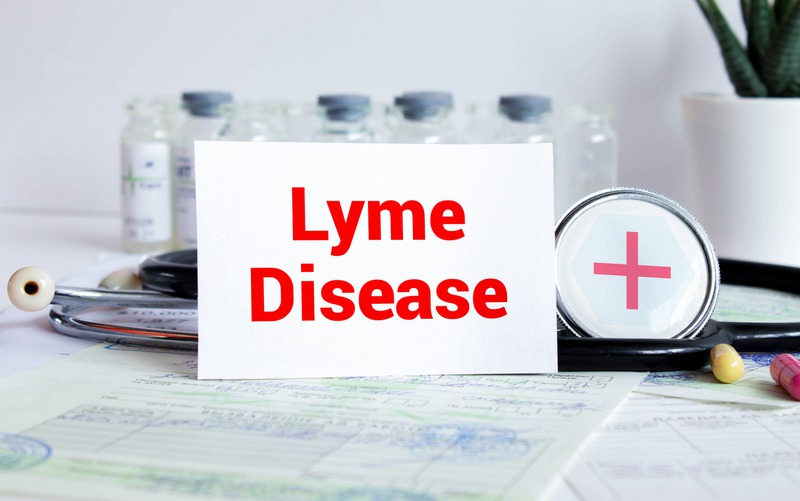
What Lifestyle Changes Can Support Lyme Disease Recovery?
Lyme disease can be a tough road to travel. If you or someone you know is dealing with this challenging illness, you probably realize that managing symptoms can be just as important as getting the right medical help. Lifestyle changes aren’t a magic fix, but they can absolutely make a noticeable difference in your recovery. Let’s break it down into practical, everyday actions that really support healing and boost your quality of life.
Building a Supportive Diet
Your immune system needs fuel, especially when it’s fighting hard against a Lyme infection. A nutritious, anti-inflammatory diet is often recommended. Here are some considerations that might help you feel your best:
-
Whole Foods: Focus on fresh vegetables, fruits, lean proteins, nuts, and seeds. These foods pack in vitamins and antioxidants that could help lessen inflammation.
-
Limit Processed Foods: Try to cut back on packaged snacks, refined sugars, and artificial additives.
-
Omega-3s: Foods like salmon, walnuts, and flaxseed may help with inflammation and brain health.
-
Stay Hydrated: Water helps your body’s natural detox functions and can keep you feeling energized.
-
Track Food Triggers: Some people find that certain foods may make symptoms worse. Consider keeping a food diary to spot connections.
Gentle Fitness Routines
Exercise can feel overwhelming when you’re run down, but gentle movement can really help with fatigue, joint pain, and mood. It’s all about listening to your body. You might try:
-
Walking: Even short, strolls can help circulation and lift your spirits.
-
Stretching: Yoga or basic stretching keeps muscles and joints from becoming stiff.
-
Swimming: The buoyancy of water takes stress off your joints and can provide a soothing, low-impact workout.
-
Tai Chi: This slow, meditative movement has been shown to help with pain and balance.
Don’t push yourself too hard. Some days you might need more rest than movement, and that’s okay. Listen to your body, and allow yourself to adjust as needed.
Prioritizing Restful Sleep
Sleep can be really difficult during a Lyme flare, but it’s one of the best ways to support healing. Consider these tips for getting better rest:
-
Stick to a regular sleep schedule, even on weekends.
-
Keep your bedroom dark, cool, and quiet.
-
Avoid screens for at least an hour before bedtime.
-
Try calming activities like reading, gentle stretching, or meditation to prepare for sleep.
-
If sleep remains a struggle, you may want to talk to a healthcare provider about further options.
Stress Management Strategies
Chronic stress can make symptoms worse and slow recovery. Finding your way to relax and recharge can really help, and there are plenty of tools to try:
-
Meditation and Mindfulness: Apps or guided videos can be a great start for beginners.
-
Breathing Exercises: Deep, slow breaths can be calming in stressful moments.
-
Creative Outlets: Drawing, writing, or playing music can all help release stress and give you a sense of accomplishment.
-
Nature Time: If you can, spend a little time outside each day. Gentle sunlight and a change of scenery do wonders for your mood (just watch out for ticks).
Caring for Mental and Emotional Health
Lyme disease isn’t just physically exhausting; it can take a real toll on emotional health. Anxiety, sadness, and anger are common feelings, especially as treatment stretches on. Taking care of your mind is just as important as caring for your body. Here are some ways to support mental wellness:
-
Support Groups: Connecting with others who understand what you’re going through can provide comfort and helpful advice.
-
Therapy: Speaking with a professional can help you process your experiences and develop coping strategies.
-
Journaling: Writing down your thoughts, frustrations, and small victories can provide clarity and relief.
-
Staying Connected: Lean on trusted friends and family, even if you aren’t feeling super social.
Reducing Toxin Exposure
Your body is already working hard to clear out Lyme bacteria, so it helps to keep additional toxins to a minimum. Some easy swaps and changes can help reduce your exposure:
-
Opt for natural cleaning products free from harsh chemicals.
-
If possible, choose organic produce to limit pesticide intake.
-
Drink filtered water to minimize heavy metal exposure.
-
Avoid smoking and secondhand smoke, as well as limiting alcohol intake.
-
Check the labels on personal care products to avoid synthetic fragrances and dyes.
Staying Consistent with Medical Advice
While lifestyle changes can support recovery, your healthcare provider remains your best ally in fighting Lyme disease. Always keep them in the loop about what you’re trying. It’s important to take medications as prescribed and to discuss any supplements or alternative therapies before starting them.
If you’re looking for healthcare providers or clinics specializing in Lyme disease, for easier access to their location, you can see them on maps, which can help streamline your search and make appointments more convenient. Tracking your symptoms and sharing them with your provider can make a real difference in understanding your progress and making any needed changes to your plan. Keeping communication open means you’re actively partnering in your recovery.
Creating a Safe, Healing Home Environment
A supportive home environment can make recovery smoother. Try to arrange your space to minimize stress and make it easy to rest. Here are some helpful tips:
-
Clutter-Free Zones: Keeping things tidy can make your home feel more peaceful.
-
Comfort Corners: Set up a cozy spot with blankets, natural light, and things that calm you, like books or music.
-
Clean Air: Open windows when possible and consider a good air purifier if outdoor air quality is poor.
-
Pet Safety: Pets are wonderful companions, but can bring ticks indoors, so check them regularly and follow your vet’s advice.
Making small adjustments over time adds up, and you’ll know best what helps you feel more relaxed at home.
Protecting Against Future Tick Bites
Once you’ve had Lyme disease, you’re probably more aware of how sneaky ticks can be. Preventing future bites is an important part of managing long-term health. Here are some ways to protect yourself:
-
Wear light-colored clothing to spot ticks more easily.
-
Use insect repellent recommended by health authorities.
-
Check yourself, children, and pets after spending time outdoors, especially in wooded or grassy areas.
-
Shower right after returning indoors and put clothes in a hot dryer to kill any hidden ticks.
-
Be aware of high-risk regions you can where seasonal tick activity is likely in your area.
Exploring Complementary Therapies
Many people with Lyme disease find extra support in therapies outside of standard Western medicine. These can include acupuncture, massage therapy, herbal remedies, or sauna therapy. Before starting any new protocol, it’s best to check with your healthcare provider. Some therapies help manage pain, boost energy, or support detoxification, but there’s no single path that works for everyone.
If you’re considering alternative services, you may find options for Lyme disease treatment in San Diego that blend traditional and holistic care for a broader recovery strategy.
Tracking Progress and Staying Hopeful
Living with Lyme disease can feel like a series of ups and downs, and progress isn’t always a straight line. Keeping a health journal can help you notice patterns and remind you how far you’ve come. Chart symptoms, energy levels, meals, and new interventions you try.
Sometimes, treatment centers like BioMed Health Center use individualized tracking tools to tailor care to each person’s unique needs. While your path may differ, know that small improvements in your lifestyle really do add up, and every bit counts.
Final Thoughts
Recovering from Lyme disease can be a frustrating and exhausting journey, but positive lifestyle changes can make it a little more manageable. Whether it’s eating better, finding moments for gentle movement, or simply connecting with others who understand, every step you take is a step toward healing.
